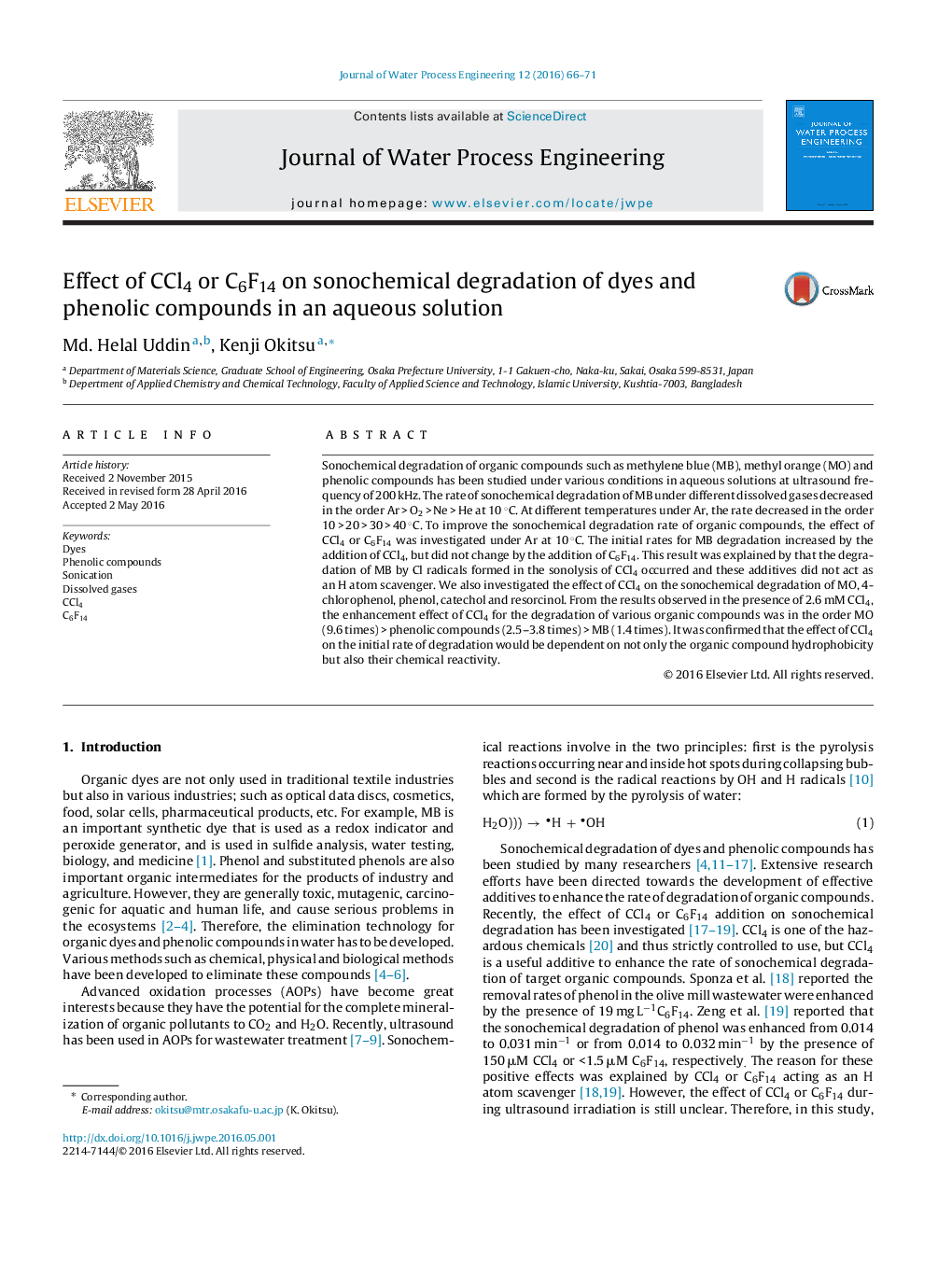| Article ID | Journal | Published Year | Pages | File Type |
|---|---|---|---|---|
| 232417 | Journal of Water Process Engineering | 2017 | 6 Pages |
Abstract
Sonochemical degradation of organic compounds such as methylene blue (MB), methyl orange (MO) and phenolic compounds has been studied under various conditions in aqueous solutions at ultrasound frequency of 200 kHz. The rate of sonochemical degradation of MB under different dissolved gases decreased in the order Ar > O2 > Ne > He at 10 °C. At different temperatures under Ar, the rate decreased in the order 10 > 20 > 30 > 40 °C. To improve the sonochemical degradation rate of organic compounds, the effect of CCl4 or C6F14 was investigated under Ar at 10 °C. The initial rates for MB degradation increased by the addition of CCl4, but did not change by the addition of C6F14. This result was explained by that the degradation of MB by Cl radicals formed in the sonolysis of CCl4 occurred and these additives did not act as an H atom scavenger. We also investigated the effect of CCl4 on the sonochemical degradation of MO, 4-chlorophenol, phenol, catechol and resorcinol. From the results observed in the presence of 2.6 mM CCl4, the enhancement effect of CCl4 for the degradation of various organic compounds was in the order MO (9.6 times) > phenolic compounds (2.5-3.8 times) > MB (1.4 times). It was confirmed that the effect of CCl4 on the initial rate of degradation would be dependent on not only the organic compound hydrophobicity but also their chemical reactivity.
Related Topics
Physical Sciences and Engineering
Chemical Engineering
Chemical Engineering (General)
Authors
Md. Helal Uddin, Kenji Okitsu,
